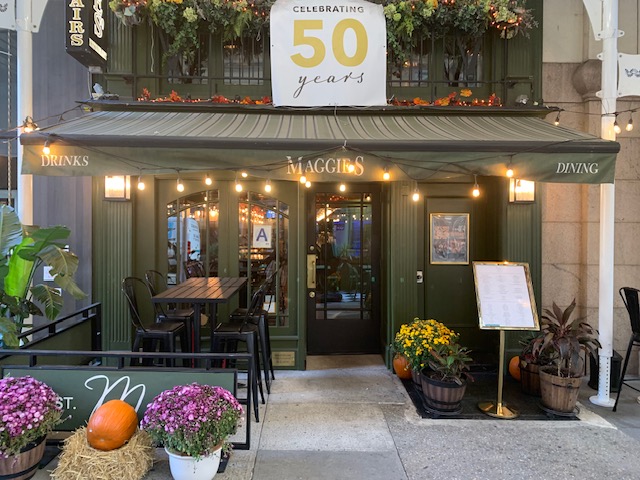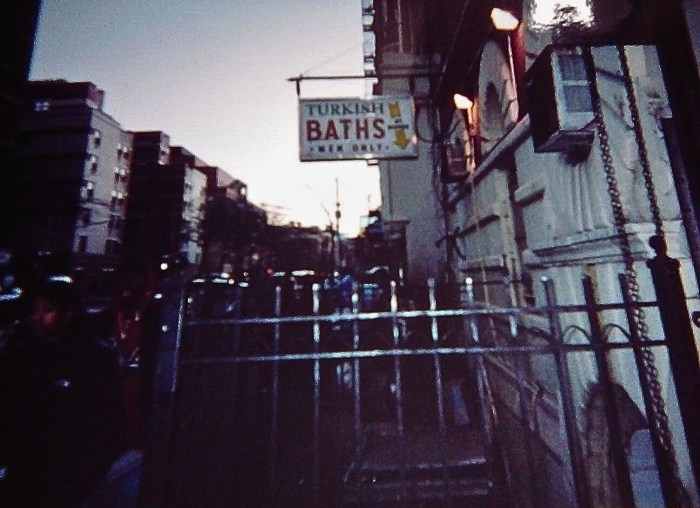By Josh Rogers
Up to $45 million of 9/11-related community development money has been shifted away from its promised uses, according to two members of the Lower Manhattan Development Corporation’s board.
“It would be an abuse of the promise to the Lower Manhattan community to do this without any public notification,” said City Councilmember Alan Gerson, whose district includes the World Trade Center site and the surrounding area. “It’s a total violation — an abdication of the promise.”
The $45 million is just one of many questions arising with the announcement last week that the L.M.D.C. will be closing within the next few months. The corporation, a state-city authority created by Gov. George Pataki at the end of 2001, was funded entirely with $2.783 billion worth of federal Community Development Block Grants approved by Washington to help Downtown rebuild after 9/11.
As the L.M.D.C. transfers its responsibilities to city agencies, the W.T.C. Memorial Foundation and the Lower Manhattan Construction Command Center, its task may be made more difficult with the announcement Tuesday that Stefan Pryor, corporation president, will be leaving at the beginning of September to become deputy mayor of Newark, where Cory Booker, his former Yale classmate, has just become mayor.
In interviews with agency defenders and critics over the last week, there was one point of complete agreement — it is time for the L.M.D.C. to go — either because it did what it was supposed to do developing the W.T.C site plan, getting a memorial design and distributing money to much-need projects Downtown, or because it served as an unresponsive bureaucratic layer further slowing progress at the W.T.C.
Is community money gone?
Gov. Pataki and Mayor Mike Bloomberg announced the $45 million “community enhancement” fund in May 2005, when they said how the L.M.D.C. would spend its remaining $800 million. Fourteen months later, there has been no announcement about the $45 million being spent or what the criteria will be for awarding grants.
Pryor said last week before his resignation announcement that he did not know how much money was in the fund and that it still had not been determined generally what types of programs could be eligible for the money. He said the corporation is evaluating the available money as it prepares to close. This week he said it is “premature” to conclude most of the money will be gone.
Gerson said he had the impression that up to $15 million of the $45 million was shifted to other places, but the two L.M.D.C. board members, Dep. Mayor Dan Doctoroff and Madelyn Wils, former Community Board 1 chairperson, said they don’t expect there will be much, if any, money to spend. Both board members said there have been cost overruns on other projects.
Doctoroff said the L.M.D.C. may also have to pay an additional $45 million if the W.T.C. memorial and museum costs more than $510 million to build, and it wouldn’t be wise to spend community funds until it is more certain the memorial can be built within the budget.
The L.M.D.C. has already pledged to spend $250 million to build the memorial and museum. The Port Authority, which owns the site, is going to invest $150 million in underground infrastructure, separate from the memorial cost estimate and the state is building the $80 million visitors center. The memorial’s $28 million sidewalks will be covered by federal 9/11-related transportation funds.
“We have a huge pit in Lower Manhattan and just to bring the site up to street level is going to cost several hundred million dollars,” said Joe Daniels, acting president of the Memorial Foundation. He said the foundation won’t know until deep in the construction process — scheduled to be done in Sept. 2009 — whether it will need the reserve money, but it will do its best to avoid having to use it. He said there is a built-in incentive to keep the project under $510 million because the Port, which is building the memorial, would have to pay for the first $25 million over the budget. The Port and L.M.D.C. would split the next $40 million and the L.M.D.C. would cover the next $25 million.
Not everyone is happy there are detailed plans to spend more money on the memorial. Gerson said there is something “terribly, terribly wrong with the financing procedure.”
“For $510 million, it’s really inconceivable that you couldn’t build a beautiful memorial,” said Julie Menin, a member of the jury that selected the design and the current C.B. 1 chairperson. Menin, also a member of the W.T.C. Memorial Foundation’s board, which is raising money for the design, said if the current estimate is too low, then officials should find a way to bring it within the budget, not get more money from the L.M.D.C. and the Port Authority.
Menin said when she served on the jury in 2003 one of her fellow jurors, Dep. Mayor Patricia Harris, a longtime confidante of Bloomberg, asked for cost estimates, on the three final designs, and L.M.D.C. staffers said that all three, including the winner, Reflecting Absence by Michael Arad and Peter Walker, could be built for about $300 million.
Frank Sciame, the construction manager tapped to find cost savings in the design of two reflecting pools at the towers’ footprints, told Downtown Express last week that he is confident in his $510 million estimate because it allows for rising construction costs, but it is “prudent” to create the $90 million overrun fund in case costs rise beyond expectations.
Menin is angry that after months of asking about the community enhancement fund there may be no money there. She said the corporation’s staff kept telling her that they would set up a request for proposal system to apply for the grants.
“The community had to fight for that,” she said of the fund. “We don’t even have an R.F.P. for it and we have repeatedly asked about it. We have been told repeatedly it will be soon.”
Wils, Menin’s predecessor on C.B. 1, said of the community enhancement money, “I don’t know how much of that will be left at the end of the day…It was never suggested what it would be for.”
The governor and mayor’s May 26, 2005 press release said the enhancement fund would be used to make Downtown “more livable for residents, more workable for businesses, and more attractive for visitors….[It will] spur the revitalization of Lower Manhattan, particularly projects with a focus on the vital components of a diverse, mixed-use community such as residential, commercial, retail, and civic amenities, and other economic development and environmental initiatives related to post-September 11th recovery.”
Deutsche Bank building
Wils thinks a lot of money was shifted to cover the costs of demolishing the former Deutsche Bank building on Liberty St. The damaged building, which the L.M.D.C. now owns, still hovers over ground zero as the five-year anniversary approaches. The L.M.D.C., which has been cleaning it, hopes to begin to dismantle it this fall, but it has not come up with a deconstruction plan that has passed Environmental Protection Agency muster.
The official budget for the Deutsche purchase, deconstruction and community outreach has grown to $207 million, and if that turns out to be the actual cost it will not require any shift in funds. Pryor said he has not seen any estimate that the project will cost more.
Councilmember Gerson said he could support spending some community enhancement money on environmental protections to make the takedown of the contaminated building safer, but added that if money was already shifted, it should have gone through a public review process.
“They shouldn’t be sapping money for one purpose and applying it to another purpose,” he said. “This was not ground zero redevelopment money. This was specifically money for community enhancement.”
Menin said L.M.D.C. officials have shown up regularly to C.B. 1 meetings to talk about the demolition, but they have not answered questions about how they are going to satisfy the E.P.A. concerns. She also pointed to the two damaged buildings still standing on opposite sides of the W.T.C., Deutsche and the Borough of Manhattan Community College’s Fiterman Hall.
“To see these buildings shrouded four and a half years later is at best troubling,” she said. The L.M.D.C. has contributed $15 million to the Fiterman demolition, but it is not managing the project.
The Construction Command Center, which oversees all large construction projects Downtown and is funded by the L.M.D.C., will take over responsibilities for the Deutsche demolition when the corporation closes.
“We’ve been at the table,” said Jennifer Nelson, the center’s spokesperson. “There is not going to be a learning curve.”
Corporation staff members who are working on the Deutsche project are likely candidates to join the Construction Center. Similarly, the Memorial Foundation’s Daniels said L.M.D.C. staff members with “institutional expertise” on the memorial will be given strong consideration.
Following the money
Congress first gave the L.M.D.C. $2 billion in Community Development Block Grants in 2001 and subsequently added targeted grants of $750 million to repair damaged utilities and $33 million for firms that lost many employees on 9/11.
Some of the agency’s other large expenditures included $350 million for business recovery, $300 million in rent and condo owner subsidies to encourage people to move and stay in Lower Manhattan, $250 million to the Memorial Foundation, $150 million to improve the East River waterfront and $70 million for the Tribeca section of the Hudson River Park.
The agency also organized the W.T.C. site and memorial site selection process, paid architects, renovated or built about two dozen small parks, and helped fund activities like the Tribeca Film and River to River Festivals. Under C.D.B.G. law, the corporation was permitted to spend up to five percent of its grants on overhead costs and staff.
Almost all of the money has been “allocated,” but some of it may not go to the purpose intended. A plan to redesign the area south of the W.T.C., called Greenwich Street South, was given $40 million, although that money might not be there anymore.
“We have never gotten a clear answer from the L.M.D.C. about that,” said a city official, speaking on the condition of anonymity. He said the city is pursuing the Greenwich plan but it is not as far along as other L.M.D.C.-funded street improvement projects — $38 million for Fulton St. and $25 million for Chinatown’s Chatham Square area.
Dep. Mayor Doctoroff said the city will be responsible for the neighborhood projects. Most of them grew out of Bloomberg’s speech on revitalizing Lower Manhattan at the end of 2002.
There is also still $7 million left in a $45 million fund for small arts groups Downtown and $50 million toward the costs of building a performing arts center at the site. Doctoroff said last week that the city may create a new organization to raise the additional money needed for the center, which will cost at least $200 million.
The L.M.D.C. bought the Deutsche building site in 2004 and a vacant site owned by Milstein Properties in 2005 for $59 million in order to expand the W.T.C. to make room for an underground bus garage, truck delivery system and reduce the site’s building density.
The Port will eventually take ownership of the Deutsche/Tower 5 and Milstein sites if the complex deal it is negotiating with W.T.C. developer Larry Silverstein is completed by Sept. 20. Doctoroff said it “seems kind of logical” for the L.M.D.C. to swap its sites with the Port in exchange for the memorial land. A Port spokesperson declined to comment on a possible land swap.
L.M.D.C. legacy
No one interviewed for this article thought the L.M.D.C. should stay around longer.
“It’ll be gone when the governor’s gone and I think everyone always knew that,” said Wils, who was appointed to the L.M.D.C. board by Gov. Pataki in 2001 at the insistence of Assembly Speaker Sheldon Silver, whose district includes the site. Pataki leaves office at the end of the year.
He set the agency up as a subsidiary of his Empire State Development Corporation and gave himself twice the number of appointments as the outgoing mayor, Rudy Giuliani. After Bloomberg took office, the governor let the mayor add new members to the board, giving the state and city equal control of the public authority.
Silver, Pataki’s chief nemesis in Albany, said the agency was a tool of the governor, but when it was left alone, it helped Lower Manhattan.
“The portion of the job they did by themselves, they did well,” Silver said. “They reached out to the community. The problem was the governor.”
He said Pataki allowed years to go by before the Port Authority began building the site’s eastern bathtub, which is needed before construction can begin on three office towers on Church St. The sites won’t be ready to build until next year.
Joanna Rose, Pataki’s spokesperson and a former L.M.D.C. spokesperson, wrote in an e-mail that “The L.M.D.C. led the efforts to stabilize and restore the residential and business community in the aftermath of Sept. 11…. They conducted an unprecedented public planning process … that resulted in the selection of a magnificent site plan and a fitting memorial. And improved the quality of life in each and every Lower Manhattan neighborhood creating or revitalizing over 120 acres of parks.”
Gerson said those views can’t be squared with the fact that the site still looks like a hole. “I think the L.M.D.C. was created with the thought that it would expedite the process,” he said. “Clearly that hasn’t happened — it’s not all the L.M.D.C.’s fault.”
He said the irony is that if the governor and mayor had permitted the normal legislative process to oversee redevelopment, it would have ultimately speeded things up because there would have been a more careful review. Both the Freedom Tower and memorial had to be redesigned a few times because of security and other concerns.
Wils countered that the site is owned by the Port Authority of New York and New Jersey, which is free to ignore the City Council and the state Legislature. She said the corporation forced everyone involved to come together, compromise, and consult with the community. “The L.M.D.C. brought all of the agencies together and without them, it would never have been done,” said Wils. “ ‘The hole in the ground’ is the mayor and the governor. That’s where the buck stops.”
Pryor said he is proud the corporation selected the plans and that there’s construction underway on the Freedom Tower, the W.T.C. train station, the bathtub and memorial, in addition to all of the park and other off-site projects that have been completed.
“It’s premature to draw conclusions about the success of the rebuilding because it is still in process,” he said. “Mega-projects like that take time.” Most of the site’s construction is expected to be done at the end of 2011.
To Gerson’s criticism about the lack of public consultation, Pryor said it has been “one of the most publicly inclusive processes in history. ‘[Elected officials] are always going to say you should do more. I respect that.”
He cited the many forums on the site plan and the workshops the agency held in every Lower Manhattan neighborhood to solicit ideas on how to spend the agency’s money.
Tom Healy, president of the Lower Manhattan Cultural Council, said the corporation got “bashed” too much and he is impressed the way the staff ran the $45 million arts grant program. “They offered a lot of support and hand-holding when small arts groups applied for the money,” he said.
David Dyssegaard Kallick, senior fellow at the Fiscal Policy Institute, one of the corporation’s most persistent critics, agreed the agency ran the art grants well and he had been hoping to see a similar process for the community enhancement money. He said the agency’s new commitment to cover memorial cost overruns highlights its problems as well as the challenges it faced.
“It shows they so badly mismanaged the process,” he said. “On the other hand, the memorial is so key. It would be better if they could say they’re doing it more straightforwardly.”
WWW Downtown Express
































